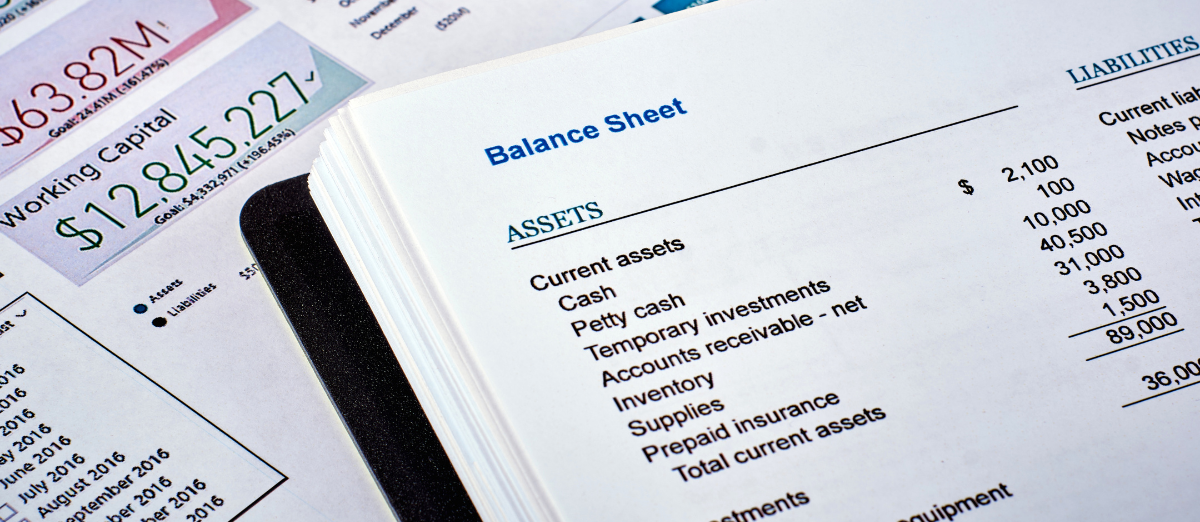Building a Farm Balance Sheet
Building a Farm Balance Sheet

As December 31 approaches, producers should work towards developing a quality balance sheet. Doing so is critical to measure business growth year over year, liquidity, solvency, and borrowing power. Most lenders require a year-end balance sheet, and even if the farm does not utilize a lender, knowing how to build a balance sheet will give the owners insightful information to make management decisions for the upcoming year.
Balance Sheet Categories
Balance sheet information is organized into two categories: assets and liabilities. These categories are further divided into three subcategories: current, intermediate, and long-term.
- Current assets – cash or cash equivalents that can be easily converted to cash within one year. Common examples of current assets include bank accounts, prepaid expenses, crop inventories in the bins, market livestock, and accounts receivable. Don’t forget to consider hidden current assets like fuel in the farm tanks, chemical and/or seed on hand, hay rolls to be fed within the year, and investment in fall-planted crops like small grains.
- Intermediate assets – are used for longer than one year, but before the 10-year mark. Intermediate assets include farm machinery, breeding livestock, and vehicles. A less common intermediate asset to remember is not-readily marketable bonds and securities, such as retained patronage earnings.
- Long-Term assets – assets that are permanent, or have a useful like of greater than 10 years. The most common example of this is farmland. However, long-term assets also include things like investments and land improvements.
- Current liabilities – debts due within a year. The most recognized current liabilities are operating notes, upcoming bills and other accounts payable, and credit card balances. Do not forget to consider other current liabilities like accrued interest on debts, and the current principal due on intermediate and long-term notes.
- Intermediate liabilities – debts due within 1-10 years. The most common example of an intermediate liability are loans for farm equipment and breeding livestock.
- Long-term liabilities – debts due after 10 years. The most common example of a long-term liability is real estate mortgages for farmland.
Tips for Accuracy
It is best to complete the balance sheet at the same time each year. For most cash-basis taxpayers, such as farmers, December 31 is a great post-harvest time for completion.
Liabilities are generally easy to track. Principal loan balances, as well as accrued interest, can be obtained from the financial institution. There is typically an invoice to accompany any outstanding payables. Assets in all three categories can be a bit harder to value. Listed below are some of the more common snags farmers encounter when completing a balance sheet as well as tips to mitigate variance.
- Grain values – grain can be hard to value due to variance in price as well as quantity. For grain that remains in bins, cross-reference the amounts with grain already sold as well as what was turned into the insurance agent to ensure accuracy. When valuing the crop, be sure to take into consideration grain already contracted. The market price at the date of completion is an acceptable way to value grain not yet sold.
- Market livestock should also be valued with contracts in mind.
- In general, it is best not to create large fluctuations in breeding livestock from year to year.
- Farmland should also not see large shifts in value year over year. However, an evaluation of owned land every 5-7 years is practical. Reevaluating every few years will keep the land on par with fair market value.
- Be sure to consider investments in fall crops as a current asset. A commonly overlooked example is wheat saved for seed. Fall fertilizer for the upcoming crop year is also a current asset that should be included on the balance sheet.
- Similarly, do not forget to include the feed on hand for cattle, including hay rolls.
- Chemicals or seed on hand should also be included as a current asset.
- Farm equipment is a tricky asset to value. Typically, a cost-basis approach is used. It is important to depreciate that equipment on the balance sheet each year.
Preparing a balance sheet each year is an important health check-up for the farming operation. Once the farm has a good balance sheet, they can understand if they need to refinance debt, search for ways to improve their solvency position and more. When a balance sheet is prepared each year, the farm will be able to see the change in net worth from year to year. A profitable year typically increases net worth, while a less profitable year may require the farm to “burn equity” and deteriorate the net worth position.
Being able to put together a high-quality, accurate balance sheet is an important skill for a producer to master. In addition, it can be a great idea to work with an accountant, or a Kentucky Farm Business Management Specialist to assist in developing a year-end balance sheet, as well as other important financial reports.
Recommended Citation Format:
Brashears, K. "Building a Farm Balance Sheet." Economic and Policy Update (21):11, Department of Agricultural Economics, University of Kentucky, November 23rd, 2021.
Author(s) Contact Information:
